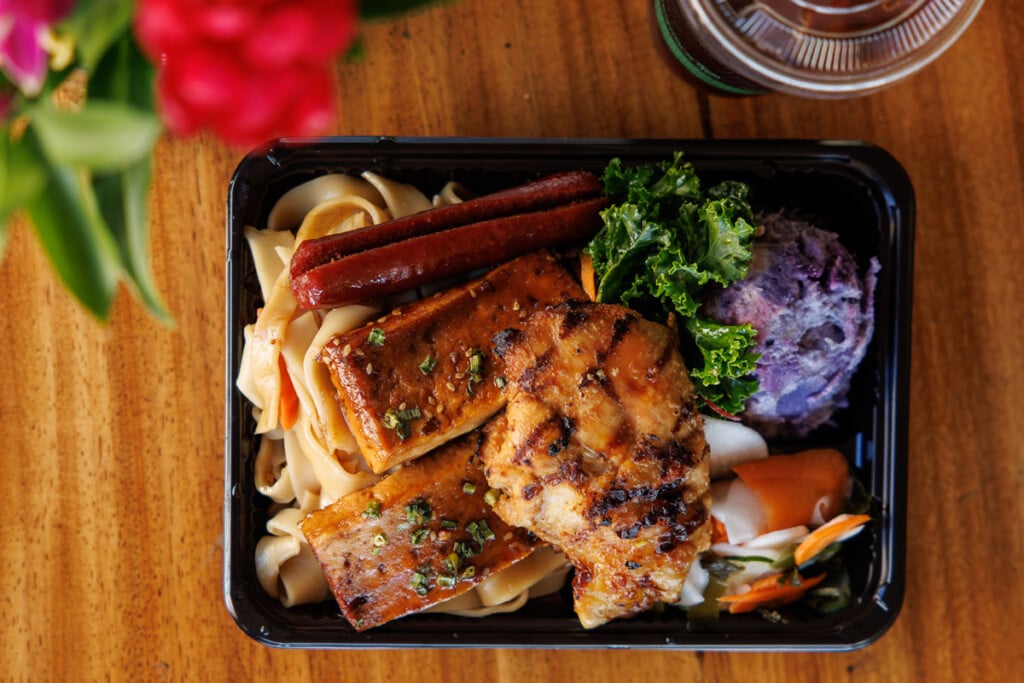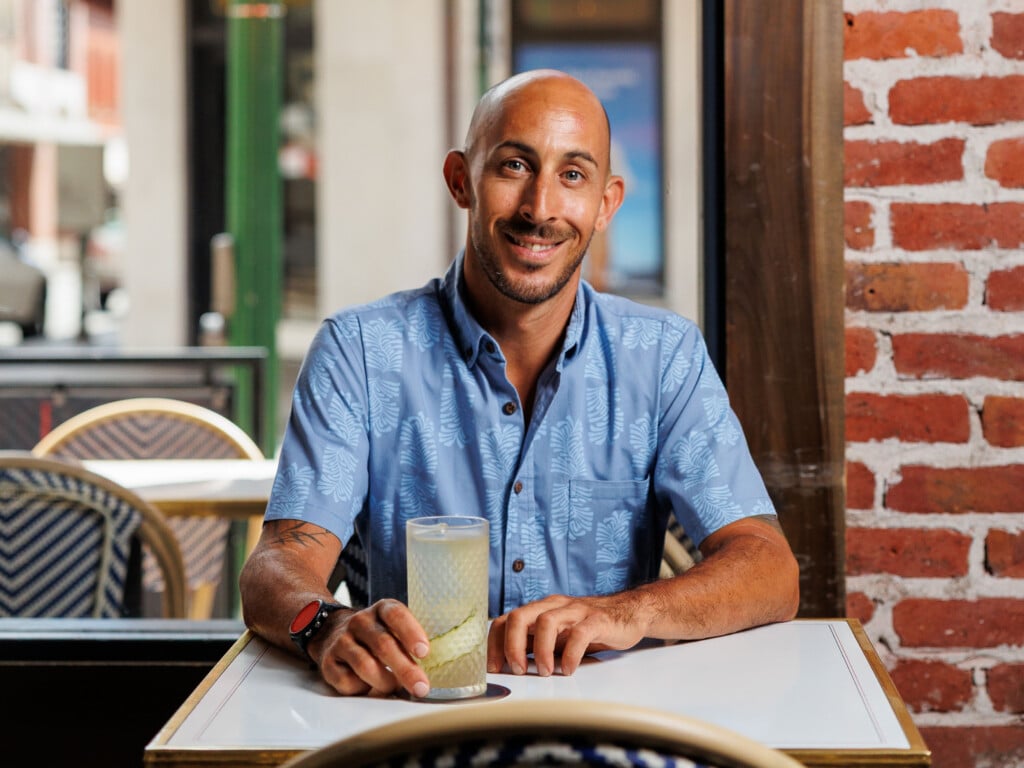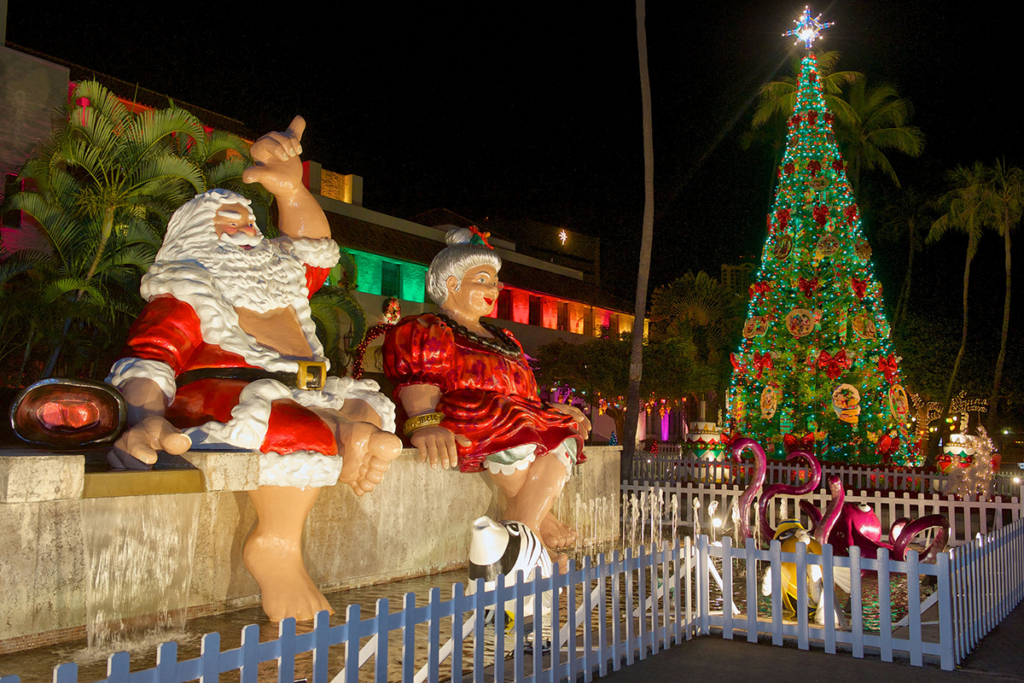Finally, a Portuguese Restaurant: Faria Brings Hawai‘i-Style Portuguese Food to O‘ahu
For 40 years, there were none on O‘ahu. Now, there’s Faria, helmed by Hawaiian Portuguese chef Kawehi Haug.

Faria is a different kind of restaurant story. Opened in Kailua early this year, it’s the island’s only Portuguese restaurant—and a very good one, which in a place where celebrations of Portuguese culture are scarce, makes Faria a resounding symbol of it. The restaurant is more than its menu of bacalhao served as fritters, in a salad, a sandwich and a gratin. More than what’s arguably O‘ahu’s best Portuguese bean soup. More even than jiggly pasteis de nata egg custard tarts cradled in crisp, hand-laminated crusts, which may be the best anywhere.
Two weeks after opening, reservations for Faria’s 66 seats were filling up four weeks in advance—unless you wanted dinner at 8 p.m. “We get customers every night who eat our food and are like, ‘My grandma made something like this, but I haven’t had it since I was 10,’” says Kawehi Haug, the chef and co-owner. “At least on four occasions I can recall, people were sitting here in tears because they never thought they would eat food like that again.”
You don’t have to be Portuguese to get Faria. It’s comfort fare, and it hits home. But if you are local Portuguese, it’s a different story.

What happens when a culture starts to lose its food identity? For local Portuguese food, we can glimpse the answer among responses to a question on a Hawai‘i subreddit two years ago: “Are there any traces of Portuguese culture left in Hawai‘i 2023?”
“Jokes,” was one answer.
“A whole bunch of last names,” was another.
“Malasadas.”
“Sausage and bean soup.”
And the ultimate stamp of assimilation: “They sell Portuguese sausage at McDonald’s here.”
Assimilation is key to why, compared to Portuguese enclaves in Massachusetts and Rhode Island, Portuguese food in Hawai‘i has gone “underground,” as Haug puts it. Crusty loaves pulled out of wood-fired fornos and fava beans cooked with wine, beer and sausage were the norm for the mostly Madeirans and Azoreans who made up 11.6% of Hawai‘i’s people in 1910, according to the U.S. Bureau of Statistics.
Today, you’d have to look hard to find favish, the old-school bean dish, even in home kitchens: The 2025 World Population Review says only 3.14% of the state’s population self-identify as Portuguese.
“Unlike Japanese, Chinese, Filipino, even Korean, where people came and established their own cultures here, Portuguese didn’t really do that. They didn’t stick with their own necessarily,” Haug says. “I think the Portuguese propensity to intermarry had a lot to do with what happened to Portuguese food in Hawai‘i.”
Meaning what was left took on a local identity. Like malasadas, from the Azores: They’re not a thing in mainland Portugal—especially not filled with haupia cream and rolled in li hing powder. “In Portuguese conclaves around the U.S., I found the food spicier, the techniques different, the approaches more varied,” Wanda Adams, a local food historian and author of A Portuguese Kitchen, wrote in the Honolulu Star-Advertiser in 2014. “Here in Hawai‘i, we acculturated fast, and both our food and our culture changed rapidly, became more ‘American.’ We largely lost our ways. But not entirely.”
Except among restaurants. In the 1970s and ’80s, in a condo building near Ala Moana Center, Lisboa Portuguese Restaurant served paella, escargots with Portuguese sausage, caldeirada seafood stew and other “Authentic Foods of Spain, Portugal and South America.” It closed in 1985. For the next 40 years, there were no Portuguese restaurants on O‘ahu.
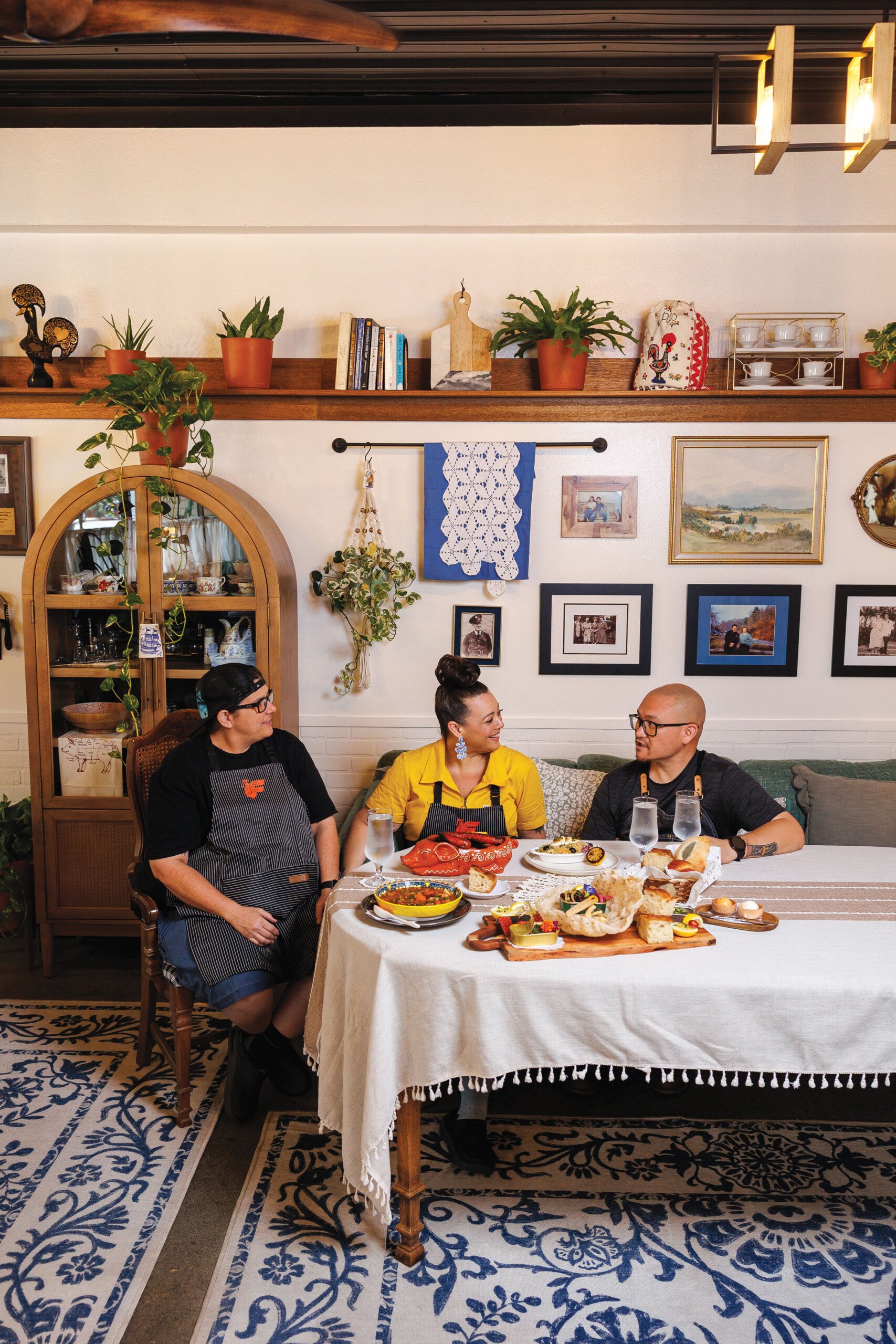
Miles away and generations later, Faria opened between a Kumon and a dry cleaners across the street from Kailua Elementary School. You can get favish here. The breads in the bread basket come from the restaurant’s oven: golden-crusted pão da lareira, pale oblongs of the Madeiran sweet potato bread bolo do caco, and glossy sweet bread rolls. The two-page menu picks up the simple dishes of memory and tilts some of them, just slightly, toward a modern palate—a grilled lemon for the simmered sardines, for instance, as if your Portuguese grandmother asked you to plate up her cooking and bring it to the table.
Portions are generous, especially the entrées; even the tinned fish board is enough for a meal for two. Which is why I have nearly nothing to say about the desserts—the eight times I’ve eaten at Faria, we were all too full to order any. Except for the pasteis de nata, a cinnamony wonder Haug worked on daily for three years until she was satisfied. Other desserts include arroz doce crème brûlée rice pudding and the Medeiros ‘ohana’s celebration dobash cake.
What else you’ll find at Faria:
Milhos frito, $14: Cornmeal fritters with Hawaiian chile pepper jelly made from co-owner Kim Potter’s Grandma Medeiros’ recipe.
Conservas, $21: Two kinds of tinned fish, usually sardines, served as is with the lids peeled back on a board arrayed with house breads, crackers, lemons and a massive house-made shrimp chip that cradles a third tin, this one filled with house pickles. Be liberal with the pickles and olive oil dripping from fish onto bread and eat messily, preferably with a glass of Vinho Verde.
Linguiça assada, $16: A horseshoe of plump, sweet sausage comes to the table bathed in flames on a ceramic pig—a presentation that’s not unheard of in Portugal, especially for chouriço. The slight char counters the sweetness of the meat; this one’s a fun pūpū.
Portuguese bean soup, $10: No macaroni. “That’s a very local thing, I think to stretch it. My grandma would flip if we did that to her recipe,” Haug says. “We use the whole hambone, tons of meat, a specific type of Portuguese sausage, lots of vegetables, cannellini, kidney beans which is a Hawai‘i thing, and butter beans because they most closely resemble fava beans and we can easily get them. We don’t thicken it, we cook it a long time. People will come by on their way to the bathroom and stick their head in the [kitchen] window to talk about the Portuguese bean soup.” Gently flavored with a hearty base, this is my favorite version.
Oxtail caldo verde, $14: The Portuguese staple creamed potato-and-kale soup is cooked with linguiça and crowned with an oxtail “because we figured Hawai‘i people like meat,” says Sheldon Lo, Faria’s general manager, bartender and co-owner (the other owners are Haug’s parents, Fraser and Puanana Haug). The simplicity is in the texture and the familiarity of potato; it’s up there with the Portuguese bean soup.
Lau lau stew, $16: The lone holdover and bestseller from Haug, Potter and Lo’s previous restaurant, Downtown’s Hukilau Honolulu; with marinated pork, lū‘au leaves and vegetables but zero coconut milk. Haug’s grandfather made this with leftover homemade lau lau to stretch it. This is a throwback you need to eat while hot.
Vinha d’alhos, $26: The garlicky, vinegary pork “can be polarizing the way we make it because Portuguese families make that dish really differently in Hawai‘i,” Haug says. “Kim’s father learned from her grandmother, and theirs is a more tender pulled pork, kind of saucy and soft and tender; you spoon it over rice. Most people’s vinha d’alhos is like Koa Pancake House, chunks that have been dried a little bit and then pan-fried. And then my family does it right in the middle: We braise it until the pork is soft and then we pan-fry it so it’s crispy. We get comments, ‘Oh you guys make ’em with crispy sides?’ Yup. In Hawai‘i, that’s a holiday dish; we eat it on Christmas, Christmas Eve, New Year, so for us to serve it all year round, people are like, ‘Ah, I eating vinha d’alhos now.’”
Granny Pereira’s piripiri chicken, $24: A whole leg, roasted in piripiri spices with potatoes and a wedge of cabbage cooked to near-melting. What it lacks in crackly skin, it makes up for in juiciness; ask for extra piripiri oil. Roast chicken is my favorite chicken, making it hard not to order this comfort dish, but there’s always next time.
Bacalhao a bras, $28: A gratin of cod, potatoes, olives and béchamel is topped with rounds of boiled eggs and hugged by that melty cabbage. A riff on a Portuguese standard, it’s very good here.
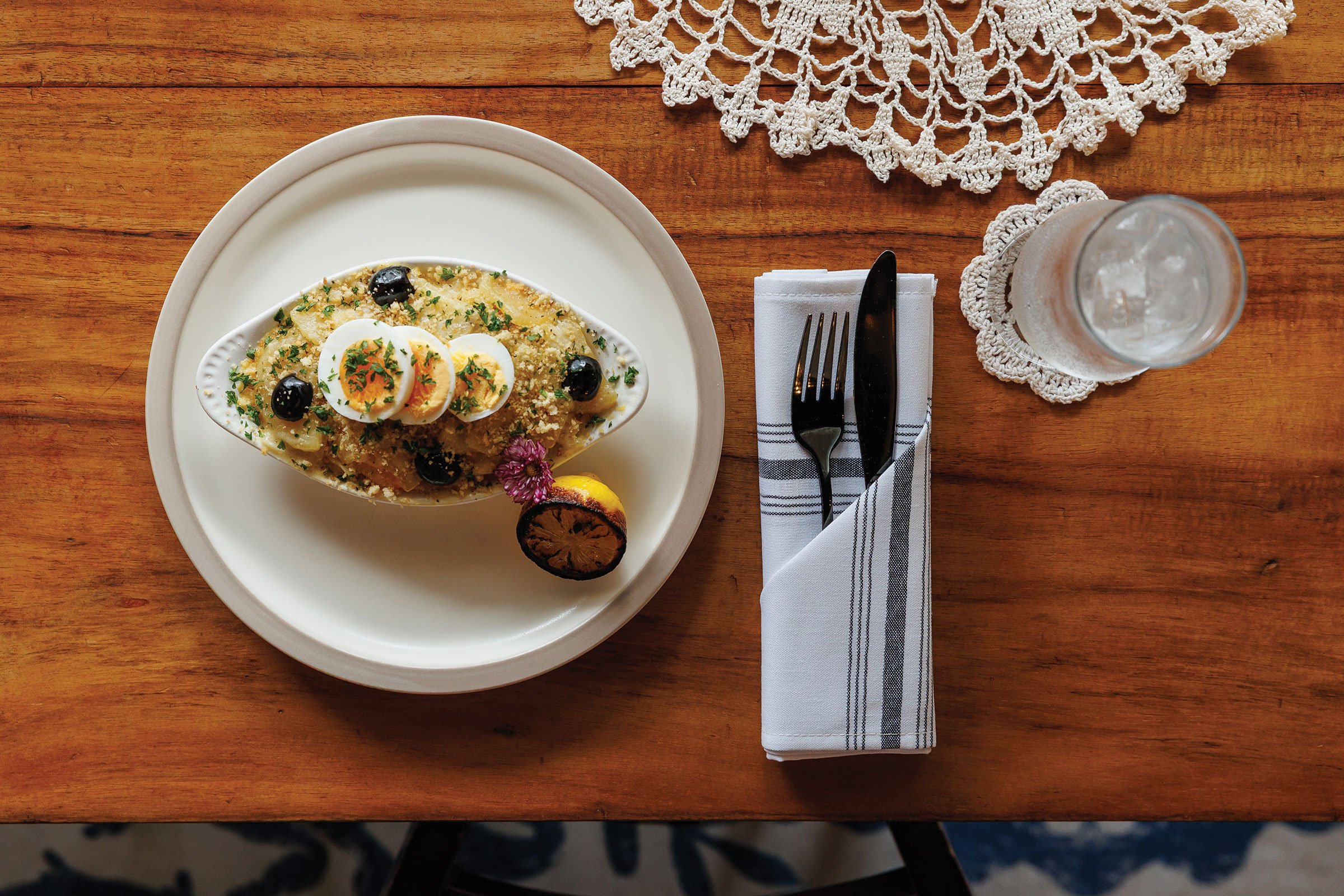
Maybe it took someone like Haug—born to a Hawaiian Portuguese mother and Canadian father who raised her outside Hawai‘i—to come home and wonder at the absence of Portuguese restaurants. In the early aughts, she was a journalist at Honolulu Weekly and then The Honolulu Advertiser; when the newspaper folded, she indulged her love of baking by opening Let Them Eat Cupcakes. Bethel Street Tap Room and Hukilau Honolulu followed, all downtown.
The journalist had become a cook and restaurateur—years during which Haug researched local church and school cookbooks, interviewed relatives about family recipes and tested out ideas in her restaurant kitchen. When COVID-19 restrictions shut down Hukilau, they simultaneously ended the Portuguese dinner pop-ups Haug had just started there. So by the time the old Champa Thai/Mojito Café space opened up on Ku‘ulei Road last year, Faria as a concept was ready.
“This is Portuguese food through the lenses of our own families. It’s not like from Lisbon. We focus on dishes that we as Hawai‘i people are familiar with,” Haug says. “All my family intermarried, so we were a hodgepodge culturally. My grandpa would cure bacalhao in a Hawaiian way, using limu and salt and things. My grandma’s Portuguese family thought that was sacrilegious. I serve my grandpa’s version. Things that I think that nobody’s had like this because my family’s such a unique collection of cultures—I realize there’s way more commonality than I thought. And I realized I was the norm. As a Hawaiian Portuguese person, not knowing much about the food but knowing I like it is the pervasive experience here.”
On any given night, Faria’s dining room seats a mix—Kailua casuals, tourists, excited townies and Portuguese families, some of whom have called over relatives from Maui and Hawai‘i Island, Haug says. When customers tell her the food brings back memories and reconnects them with their histories, she thinks, that is the point of food. When Francisco Duarte Lopes, the Portuguese ambassador to the U.S., told her Faria was one of his top five restaurants in the world, and that it would do well even in Lisbon, she thought, he gets that it’s our own Hawai‘i-style food.
I had one hesitation in writing this story, and that was that Haug and I have worked together on and off for more than 15 years. We both covered restaurants at the Advertiser, and until she opened Faria, Haug freelanced for HONOLULU, writing dining reviews and other pieces.
Ordinarily this would pose a conflict of interest. But I explained to editorial director Diane Seo, who’s worked with Haug even longer, that Faria’s cultural importance supersedes that. And she knew I loved the food—I drove over the Pali three times in its first five weeks to eat there. Do it, she said.
So that’s the story. What happens when a culture starts to lose its food identity? For Hawai‘i’s Portuguese, the answer can wait.
308 Ku‘ulei Road, Kailua, fariahawaii.com, @fariahawaii
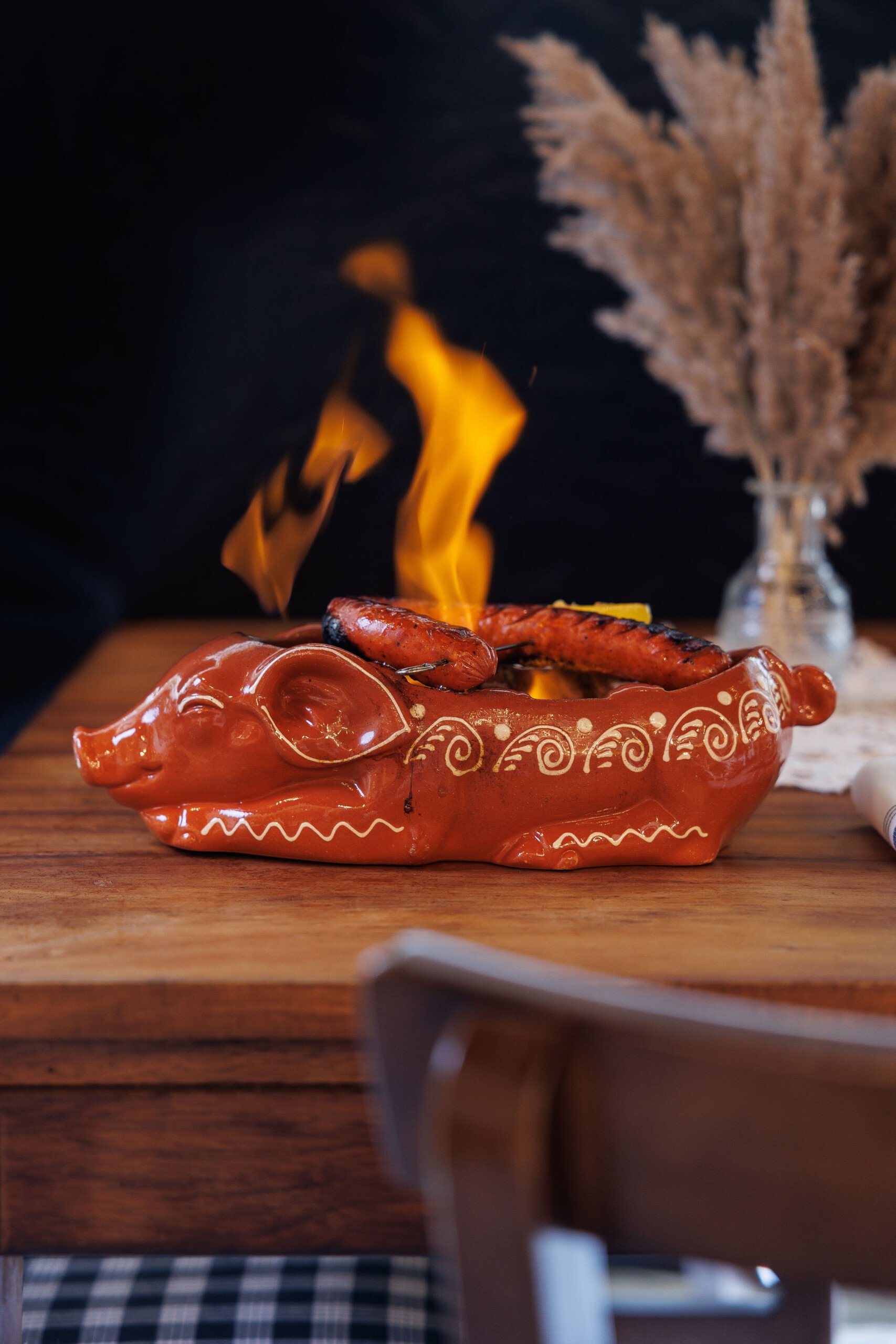
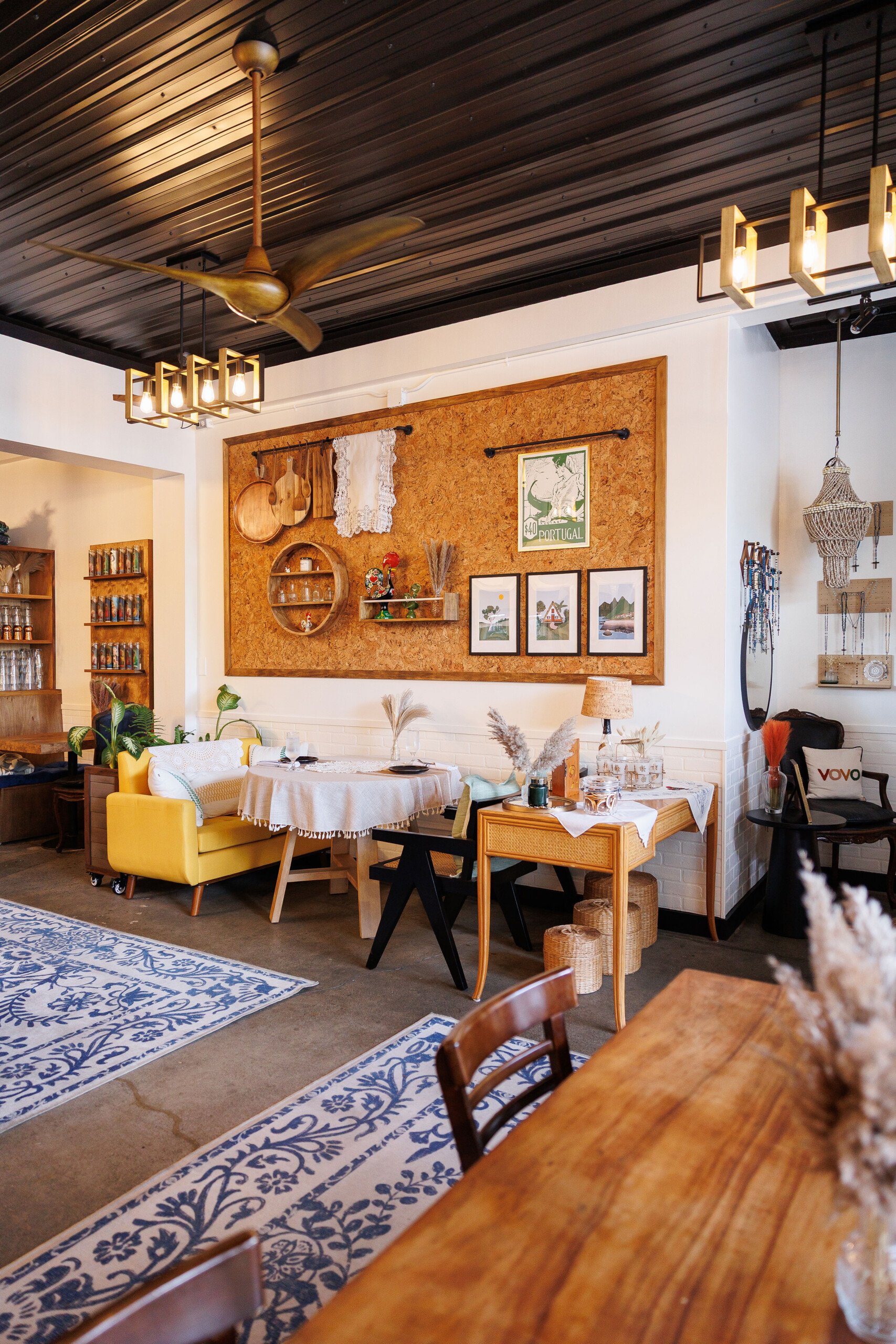

A Perfect Pastry
Until Faria’s owners found for a space for the restaurant, they planned to roll out a pasteis de nata truck. For three years, Kawehi Haug labored over the Portuguese custard tarts, which are notoriously difficult to make. Now that Faria has opened (the truck is still in her front yard), Haug tells HONOLULU the story behind its best-selling dessert.
Edited by Mari Taketa
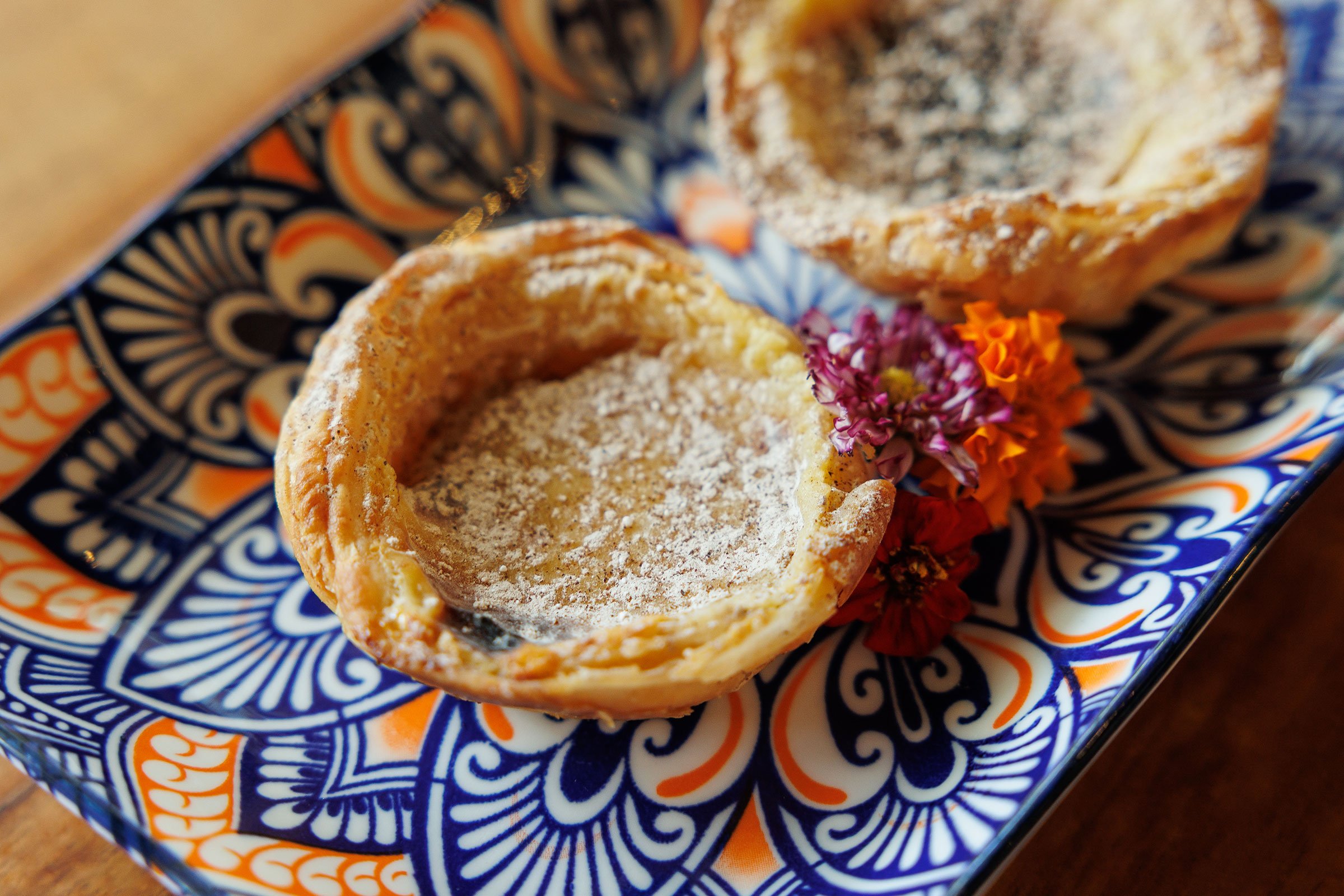
“It’s the most iconic Portuguese pastry. I like things like that, things that represent culture so purely. At the monasteries and convents where they’re made, the ovens are 700, 800 degrees and tons of people are hand-laminating the pastry and putting them in tins. The bitterness of the burnt top is supposed to offset the sweetness of the custard.
I thought if I don’t get it right, we’re not gonna offer it at all. I wanted to create a custard that would hit the Hawai‘i palate, but could still be considered traditional Portuguese. I tried adjusting the amount of sugar to get them to burn, but they were too sweet. I went to Hana Kitchens [to use the commercial ovens], and they were just on fire in the oven.
I kept going with little tweaks. I got the custard right—I had to partially cook it on the stove, at a much higher temp for a shorter time.
Then I wasn’t happy with the crust. It has to be crispy, it has to have a spiral when you turn it over because of the way it’s laminated—that’s one of the ways you can tell it’s made properly—and the edges should frill out as you bake it under the high heat. I wasn’t able to get all three.
They don’t let you photograph or film inside the monastery where they make these tarts, but David Leite, a Portuguese food writer, was granted access to film at a distance. I watched the video over and over. There’s all these little things. They used two thumbs. I thought I’m not gonna do that, I’m going to use a tart press. We can’t be using our thumbs.
But in the end, all these things matter. You can’t take short cuts. This is probably one of the most difficult pastries to master.
I tried tons of recipes. If I had a minute, I tried something different. I have a whole notebook filled with notes, hand-scribbled recipes, things I tried. I finally landed on a method that works.
We hand-laminate the dough very thin, like rolling out pasta dough. We use soft butter, not cold butter. Essentially, I roll out paper-thin sheets, spread them with butter, and roll them up into logs so it’s hundreds of layers rolled up. Then I use that dough to make the individual tarts.
My crust lands between traditional French pastry, minus yeast, and filo dough. It gives that shattery effect—you bite in, and all the little pieces fall apart. That’s what I was going for.
My first batch, I had [co-owner] Sheldon [Lo] try it, and he was like oh, I hate to say it, but this is the way.
It’s the most labor-intensive. So we can only make about 200 a day. We sell out every day. The Portuguese ambassador and many other people say they’re the best custard tarts they’ve had, even in Portugal. That’s satisfying.”
SEE ALSO: Faria Is O‘ahu’s Soulful, New and Only Portuguese Restaurant
Mari Taketa is editor of Frolic Hawai‘i and dining editor of HONOLULU Magazine.
